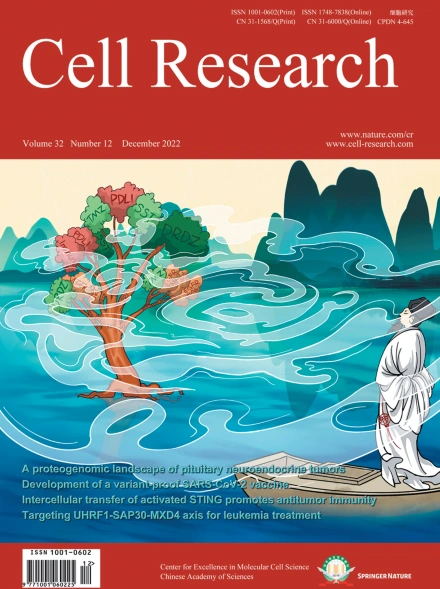
Advanced Search
Submit Manuscript
Advanced Search
Submit Manuscript
Volume 32, No 12, Dec 2022
ISSN: 1001-0602
EISSN: 1748-7838 2018
impact factor 17.848*
(Clarivate Analytics, 2019)
Volume 32 Issue 12, December 2022: 1124-1127 |
AI-empowered integrative structural characterization of m6A methyltransferase complex
Xuhui Yan1,† , Kai Pei2,† , Zeyuan Guan1,† , Feiqing Liu1 , Junjun Yan1 , Xiaohuan Jin1 , Qiang Wang1 , Mengjun Hou1 , Chun Tang2,* , Ping Yin1,*
1National Key Laboratory of Crop Genetic Improvement, Hubei Hongshan Laboratory, Huazhong Agricultural University, Wuhan, Hubei, ChinaDear Editor,
N6-methyladenosine (m6A) is the most abundant and prevalent internal modification in mRNA.1 In mammals, m6A exerts pivotal roles in posttranscriptional regulation and its dysregulation is implicated in various diseases including cancer.2 m6A is installed by a multicomponent methyltransferase complex (MTC, also known as the m6A writer complex).3,4 The mammalian MTC is composed of the core m6A methyltransferase METTL3–METTL14 complex (MTC core) and several regulatory proteins including WTAP, the adaptor responsible for METTL3–METTL14 localization and proper substrate recruitment,5 and VIRMA (KIAA1429), the specificity mediator that mediates preferential m6A modification at the 3′ untranslated regions (UTRs, Fig. 1a).6 Dysregulation of MTC components results in the disruptions of m6A.2 Compared to the other currently identified regulators (HAKAI, ZC3H13 and RBM15), WTAP and VIRMA are reported to have greater impacts on total mRNA m6A levels upon knockdown.5,6 Despite the advances in understanding the roles of individual MTC components and the structural determination of MTC core,7,<a data-track="click" data-track-action="reference anchor" data-track-label="link" data-test="citation-ref" title="Wang, P., Doxtader, K. A. & Nam, Y. Mol. Cell 63, 306–317 (2016)."
https://doi.org/10.1038/s41422-022-00741-8